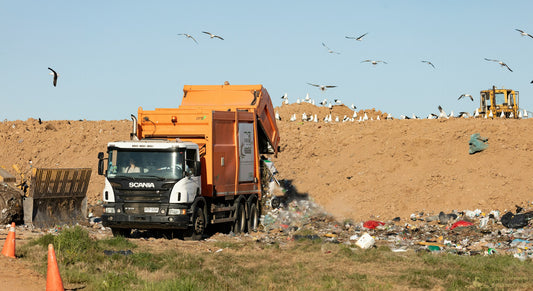Share
Several decades ago, the idea of a light material that could withstand time, resist decay, and is cheap to produce seemed like a dream come true.
Meet plastic! The miracle invention that transformed our lives , only to become a nightmare for our planet.
As we find ourselves facing unseen levels of plastic pollution, it is time to question why we use so much of this omnipresent material.

Let us embark on a journey that explores how we got to that point. We will peel back the layers of our plastic dependency, explore the roots of the issue, and seek solutions to break free from this environmental nightmare.
The Plastic Surge
To understand the source of our predicament, let's travel back 70 years.
While the first man-made plastic was created by Alexander Parkes in 1862, the material only found the mass market during World War II, when the U.S. funded plastic research with billions.
The military began to use plastics in a variety of applications. For example, neoprene was used to make wet suits for the military. Plexiglass replaced normal glass in vehicles, and many parts in airplanes were replaced by polyethylene bcause of its light weight.
Check out this video from 1944, which celebrates plastic as a miracle material.
The use of plastics during the war was a significant milestone in the history of materials science, and it paved the way for the widespread use of plastics in consumer goods and other applications.
A famous example is Tupperware, which was founded in 1946 shortly ater the war. Step by step, plastic creeped into out lives, replacing more and more products previously made of other materials.
According to a study published in the journal Science, the world now produces over 450 million tonnes of plastic each year, up from just two million tonnes in 1950, with projections indicating a potential doubling by 2040.
The Convenience Conundrum

A significant portion of this production is attributed to the surge in single-use plastics and packaging.
While previously using plastic had a true advantage, a lot of the problems we have today are caused by convenience.
The rise of single-use plastics, such as cups, straws, and food packaging, is driven by the desire for convenience and ease of use. Plastic is cheap, lightweight, and durable, making it an ideal material for disposable products.
This culture of convenience has become so deeply ingrained in modern society that it is hard to imagine it to change.
Being too lazy to brew your own coffee, excessively ordering food, and buying prepackaged food in the grocery store - all contribute to plastic pollution.
From disposable water bottles to single-serving packaging, convenience has taken priority over sustainability.
The ease of use, coupled with the fast-paced nature of our lives, has led to a surge in demand for plastic products, contributing to the alarming environmental toll.
Corporations play an important role in fueling this behavior. The convenience-driven market demands have led companies to prioritize cheap materials, often ignoring the long-term environmental impact.
Add in a lack of clear regulations and corporate responsibility and you have the perfect recipe for a plastic explosion.
Environmental Fallout

The environmental consequences of our plastic obsession are terrible.
Oceans, once filled with life, are now drowning in plastic waste.
A study by the Ellen MacArthur Foundation estimates that by 2050, there could be more plastic in the oceans than fish.
Marine life suffers from ingestion and entanglement, ecosystems are disrupted, and microplastics infiltrate our food chain, posing a threat to human health.
If we want to break free from the plastic flood, we need to work together as a society.
-
Embrace Circular Economy Practices: Transitioning to a circular economy involves reducing waste, reusing materials, and recycling at every stage of production. Recycling should always be the last resort. This shift can help break the cycle of consumption and reduce the environmental impact of plastic.
-
Legislation and Regulation: Governments worldwide must implement and enforce regulations to limit plastic production. Bans on single-use plastics, incentivizing sustainable alternatives, and holding businesses accountable for their environmental footprint are crucial steps toward a sustainable future.
-
Promote Innovation: Researching alternative materials that are biodegradable, compostable, and less harmful to the environment is mandatory for innovation. Encouraging investments that align with ecological sustainability paves the way for a plastic-free future.
-
Consumer Awareness and Education: With knowledge about the environmental consequences of plastic consumption consumer are responsible to make the conscious choice. Support eco-friendly brands, and fostering a commitment to reducing plastic use will send the right signal to corporations.
Breaking Free is a Collective Effort
As we navigate the labyrinth of plastic consumption, it becomes evident that our journey towards a sustainable future requires a collective effort.
By understanding the reasons behind the surge in plastic production and actively embracing solutions, we can break free from the chains of convenience and build a world where plastic no longer threatens our planet.
The choice is ours – do we want to continue down the path of environmental degradation or to embark on a new journey of responsible and sustainable living.








